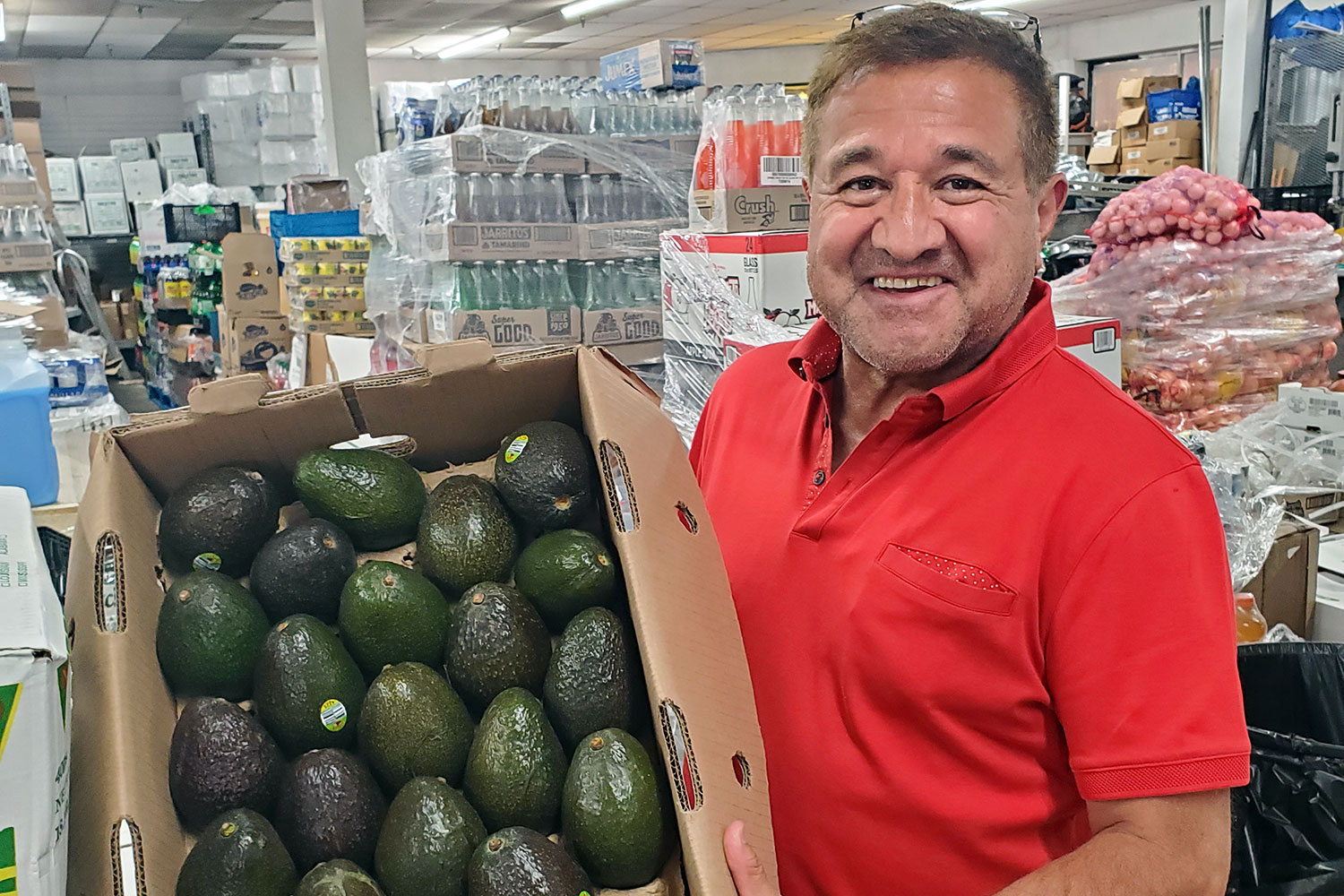Sado Marin was 16 years old when he emigrated to Chicago from Hidalgo, Michoacan. He didn’t speak English. He had never been to the United States. All he knew about Chicago was that when people who had moved up there came home, they were driving brand-new Buicks and Cadillacs. They had big jobs. In steel mills. In restaurants. A young man who wasn’t planning to go to university could earn ten or twenty times as much money in Chicago than he could in Michoacan, farming or building furniture. That was all he needed to know.
Marin found work as a dishwasher at the International House of Pancakes in the Marriott Hotel. Two years later, having learned the language, he was promoted to cook. Eventually, as so many immigrants do, he went into business for himself, opening a taqueria and supermercado at the corner of Lawrence and Kedzie avenues, in Albany Park. As so many immigrants from Michoacan do, he named it after his home state: Lindo Michoacan.
I visited Lindo Michoacan in search of an answer to an important Chicago question: why is “Michoacan” in the names of so many taquerias, and just about every paleteria. Besides Marin’s joint, there’s El Michoacanito on Kedzie, El Michoacan on 59th, Taqueria Michoacan and Carnitas Michoacan on 63rd, La Paloma de Michoacan in Blue Island, El Michoacano in East Chicago, and a chain of ice cream shops called La Michoacana, one of which is a block down Lawrence from Lindo Michoacan. (This is the most times “Michoacan” has ever appeared in a paragraph in Chicago magazine. I didn’t even have to conduct an archive search to tell you that.)
With the pride of a native, even a native who left his hometown half a century ago, Marin says it’s because Michoacan’s food is the best in Mexico. Michoacan is the birthplace of carnitas — braised pork — and its tropical, seaside climate produces the world’s most delicious avocados, which are exported all the way to Japan to be rolled into sushi. Marin always has cauldrons of carnitas simmering in his kitchen; on Saturday mornings, the lines at his deli counter — for carnitas, barbacoa, tripas, menudo, pollo asado — snake through the aisles of the store. Michoacanos put the name “Michoacan” on their restaurants because it is an advertisement for great Mexican food.
“The reason that we are so famous is because the food from Michoacan is amazing, okay?” he says. “It has so many different regions, like close to the coast, then another part north that is not too hot. Different plants, different ways of harvesting the food. And somehow, the natives of this state, they make very good, very good food wherever you go, any part of the state you go, they are very famous for the food they make.”
Michoacan’s fruit harvest — lemons, limes, mangos, cantaloupe, watermelons — has made the state’s name synonymous with ice cream, even in Mexico.
“When you go to Mexico, it’s the same thing,” Marin says. “You see an ice cream store, it says ‘Michoacan.’”
Of course Michoacan produces the best carnitas and the best paletas, says Artemio Arreola, founder of Casa Michoacan, a Pilsen nonprofit that sponsors cultural events and provides legal assistance to immigrants from the state. (As Chicago’s number one Michoacan booster, of course Arreola would say that.) But that’s not the only reason for the proliferation of restaurants named Michoacan. Although Michoacan is only the ninth most populous state in Mexico, it has contributed the most immigrants to Chicago. According to a survey by the Mexican consulate, 12.5 percent of Chicago’s Mexicans are Michoacanos. Naming a restaurant “Michoacan” is a good way to appeal to their homesickness.
“The number one reason” Michoacan produces so many immigrants “is the lack of opportunity,” he says. “There’s not much opportunity to go to school. Many people say, ‘You go to the United States, you have a nice car, nice clothes, a nice house.’ They want to go to El Norte.” It was easy to emigrate from Michoacan, because the U.S. government’s bracero program, which recruited temporary farm workers, had an office in Zamora. Arreola followed his uncles to Chicago, to work in a plastics factory: “one of my uncles work in there. One is already the boss. They give jobs to friends, family.”
(Arreola compares Michoacan to Michigan, the American state with which it shares an abbreviation. Both are “places of lakes.” Both are also places with limited economic prospects which have contributed hundreds of thousands of natives to Chicago. “They’re kind of related.”)
Sado Marin, the penniless teenage immigrant who spoke no English, is now Sado Marin, boss of an enterprise with 90 employees who hail not just from Michoacan, but from other Mexican states and Central American nations. He owns a home in Edgebrook. His son, Alonzo, graduated from Northwestern University, and just left a job with Goldman Sachs to work at Lindo Michoacan.
“Eight months ago, he came to work for me,” Marin says proudly. “I want to keep the business in the family. He makes more money than Goldman Sachs. There, he has a boss. Here, he’s his own boss.”
Marin loves Michoacan. His restaurant’s walls are decorated with black-and-white photos of Hidalgo’s Plaza Centenario and its Iglesia El Santuario. But Michoacan could not have given him what Chicago has.
“Well, if I didn’t follow the education, university, then you got two choices: either you work over there, or you work over here,” he says.
That’s the Michoacan story, in one of many, many Michoacano restaurants.




